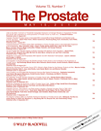Can the prostate risk calculator based on western population be applied to asian population?
Abstract
BACKGROUND
We developed a Korean Prostate Cancer Risk Calculator (KPCRC) for predicting the probability of a positive initial prostate biopsy using clinical and laboratory data from a Korean male population (http://pcrc.korea.ac.kr). We compared its performance to prostate-specific antigen (PSA) testing and the Prostate Risk Calculator 3 (PRC 3) based on data from the Dutch part of European Randomized Study of Screening for Prostate Cancer (ERSPC), which predicts biopsy results for previously unscreened men.
METHODS
Data were collected from 602 Korean men who were previously unscreened and underwent initial ten-core prostate biopsies. Multiple logistic regression analysis was performed to determine the significant predictors. Area under the receiver operating characteristic curve (AUC) and calibration plots of both calculators were evaluated.
RESULTS
Prostate cancer (PCa) was detected in 172 (28.6%) men. Independent predictors of a positive biopsy included advanced age, elevated PSA levels, reduced volume of the transition zone, and abnormal digital rectal examination findings. The AUC of the KPCRC was higher than the PRC 3 and PSA alone on internal and external validation. Calibration plots of the KPCRC showed better performance than the other models on internal and external validation. Applying a cut-off of 10% of KPCRC implied that 251 of the 602 men (42%) would not have been biopsied and that 12 of the 172 PCa cases (7%) would not have been diagnosed.
CONCLUSIONS
The KPCRC improves the performance of the PRC 3 and PSA testing in predicting Korean population's risk of PCa. It implies that Asian populations need their own risk calculators for PCa. Prostate 72:721–729, 2012. © 2011 Wiley Periodicals, Inc.




